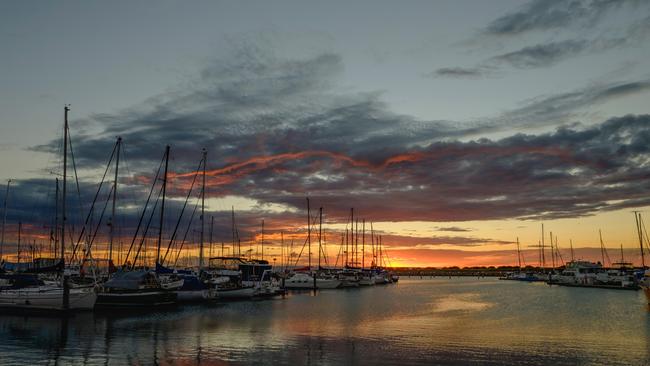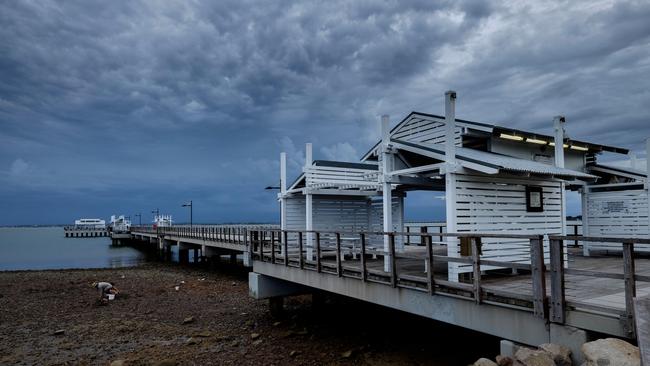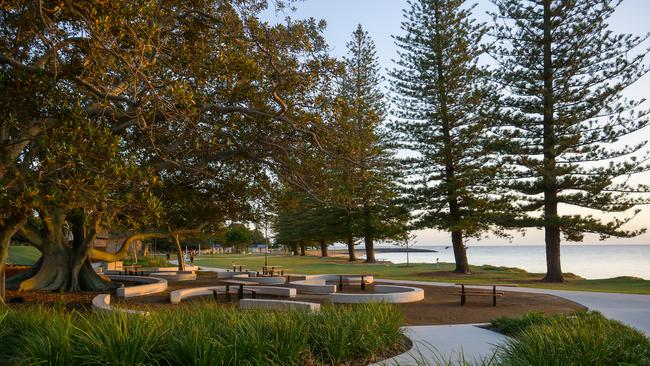A shack in Scarborough: salty memories of Redcliffe Peninsula
Matthew Condon finds the seaside village of his childhood transformed yet strangely familiar.

Through life there are some houses you’ve lived in or been associated with that sit permanently on a small street in your distant memory, like tokens on a Monopoly board, and rarely change despite the passage of time. This real estate of reminiscence exists beyond the vagaries of the market, can never be built out and has title deeds bearing your signature for as long as your powers of recall allow.
One of a handful of these houses in my remembrance is a small fibro shack in the suburb of Scarborough on the northern tip of the Redcliffe Peninsula, about 40km north of Brisbane. That little house, on a sandy thoroughfare called North Quay, belonged to my great aunt and uncle, Nell and Stan Corn, back when the peninsula was an afterthought, too far from Brisbane to bother about and no longer the picnic and swimming haven for the big city slickers of the early 20th century, shunted up by steamboat from the CBD to the villages of Clontarf, Woody Point, Margate, Redcliffe and Scarborough for a day of frivolity.
Yet that shack, with its three red-painted concrete steps out the front, and out back a car port and shed stuffed with rods and reels and even an old-style brass pearl diver’s helmet, became by chance a seminal landscape for me. I can close my eyes now and feel on my face the briny breeze off Deception and Bramble Bays that would slip in through the open windows of the house’s closed-in front veranda, riffling the curtains and creeping about my great aunt’s extensive shell collection, and draw in the earthy scent of muddy mangroves, and hear sea birds and the faint tinkling of yacht rigging.

Portions of Scarborough, so named after the more famous seaside resort in North Yorkshire in the UK (Are you going to Scarborough Fair? / Parsley, sage, rosemary and thyme…), were subdivided in the late 1870s and advertised as a “new marine township”, and that Scarborough Beach “may be considered unsurpassed in Australia, having splendid stretches of pure hard sand”. As for fishing, the sales pitch said there was an “abundance of Schnapper, Whiting, Turtle, Crabs, Oysters, etc., awaiting capture”. In 1935, during the Great Depression, the 2.8km Hornibrook Bridge was completed across Bramble Bay, between Brighton in the south and Clontarf in the north, offering quicker access to Brisbane city.
As a kid in the 1960s, Scarborough was a world away. You crossed the buckled surface of the Hornibrook and it rattled the family car with a seemingly endless, metronomic da-dump da-dump rhythm you could still feel in your bones all the way to the house of shells.
Why was that little green-painted house on my Monopoly board? As young parents finding their way, Mum and Dad took six months rent‑free there when my twin sister and I were babies. Nell and Stan had business in Sydney at the time, and so the place at North Quay became one of my first homes.
Dad also had a strong connection to the area. In the 1950s his grandmother lived in Clontarf, on the south-western edge of the peninsula, and the famous story in our family was that as a young man he would ride his bicycle from his home in the inner-Brisbane suburb of Kelvin Grove all the way to Clontarf, where he would prise oysters off the rocks nearby. His grandmother fried them up in fritters, then he would ride all the way back to the city.
In late 1962, Nell’s brother – my grandfather George Baker, a motorcycle enthusiast, signwriter and odd-jobs man – passed away from cancer on the closed-in front veranda of that Scarborough house. He was just 52. That moment became so significant to me over time that I imagined George’s death in my first novel, The Motorcycle Cafe: “He sank back in the chair, one slipper suspended above the floor, the other planted against the boards… The cigarette rolled between the floorboards and scorched the wood. It burned out, leaving a fragile skeleton of ash, and George looked out the window to the clear sky.”
As a family we continued to travel to Scarborough, over the da-dump bridge, past its beautiful creamy art deco-style concrete portals and at the northern end the cluster of seafood shops with their paintings of googly-eyed fish and crabs (or have I imagined that distant dreamscape?).
Stan died in 1965 and was buried in Redcliffe Cemetery. Nell joined him 11 years later. Before he passed, she would often comment on her husband’s “roving eye” and vowed that one day she’d be “on top of the bugger” for all time. And so it came to pass. Nell is buried above Stan in the same plot in that cemetery.

Today, Scarborough and indeed the entire Redcliffe Peninsula have been transformed. The salty village of my memory is now a modern cluster of apartment buildings, restaurants, cafes, fitness studios and even an anti-ageing clinic. There are fish and chip shops galore, an oyster wholesaler and the marina, so its “marine township” roots are still strong. But in a strange way the peninsula has returned to its years of desirability as a place to de-stress, harking back to those Brisbane day-trippers who caught the steamship at Howard Smith Wharves (now a funky restaurant precinct), before the Story Bridge was built, and lost their troubles and woes on the bayside sands of Redcliffe.
The website for Vavé Scarborough, a luxury apartment complex in Landsborough Ave, announces: “Retreat to the sanctuary-like surrounds of Vavé’s resort-style grounds, where residents are free to relax and unwind.” It describes Scarborough as a “tranquil pocket of paradise”.
Who would have thought that Redcliffe and its surrounds (pop. 50,000), traditionally owned by the Ningy Ningy people, then selected by explorer John Oxley as the site of the first European settlement in Queensland in 1824 before being snubbed a year later for a more attractive location that would become Brisbane, would emerge almost two centuries later as the state capital’s little Riviera?
Still, the place offers flashes of its past: random sprigs of gangly palm trees; broad suburban streets designed for casual gambolling; grown men dressed in work clothes riding home on their bicycles at dusk; an elderly couple sitting on the veranda of their fibro shack in the evening, seemingly oblivious to the towering resorts and apartment buildings around them.
As for my family’s shack at North Quay, it’s long gone, replaced by a featureless, chocolate-brick, ’70s-style bungalow bracketed by blocks of flats.
On a recent visit, the shoreline seemed so much further away from the old house site than I remembered, the mudflats vast at low tide. But looking out to the bay towards Moreton Island, as darkness fell, you could still see the pinpoint lights of boats and trawlers bobbing on the horizon, as bright as those pearls that Great Uncle Stan, in his big brass diver’s helmet, once retrieved from the ocean floor. And that’s when you know that everything has changed, and nothing at all.
Matthew Condon is the author of 10 novels including The Trout Opera; nonfiction works include his most recent book, cold case investigation The Night Dragon (UQP). He now lives in Byron Bay.






To join the conversation, please log in. Don't have an account? Register
Join the conversation, you are commenting as Logout